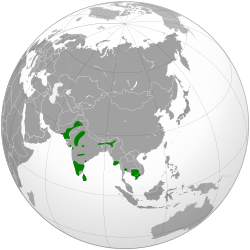| Common name | Scientific name and subspecies | Range | Size and ecology | IUCN status and estimated population |
|---|
| Bank cormorant or Wahlberg's cormorant  | Phalacrocorax neglectus
(Wahlberg, 1855) | Namibia and the western seaboard of South Africa
 | Size:
Habitat:
Diet: | EN
|
|---|
| Socotra cormorant  | Phalacrocorax nigrogularis
Ogilvie-Grant & Forbes, HO, 1899 | Arabian Peninsula.
 | Size:
Habitat:
Diet: | VU
|
|---|
| Pitt shag or Featherstone's shag  | Phalacrocorax featherstoni
Buller, 1873 | Pitt Island.
 | Size:
Habitat:
Diet: | EN
|
|---|
| Spotted shag  | Phalacrocorax punctatus
(Sparrman, 1786) | New Zealand. | Size:
Habitat:
Diet: | LC
|
|---|
| Black-faced cormorant  | Phalacrocorax fuscescens
(Vieillot, 1817) | Western Australia, South Australia, Victoria and Tasmania
 | Size:
Habitat:
Diet: | LC
|
|---|
| Australian pied cormorant or yellow-faced cormorant  | Phalacrocorax varius
(Gmelin, 1789) | Australasia, New Zealand
 | Size:
Habitat:
Diet: | LC
|
|---|
| Little black cormorant  | Phalacrocorax sulcirostris
(Brandt, 1837) | Australia and northern New Zealand | Size:
Habitat:
Diet: | LC
|
|---|
| Indian cormorant  | Phalacrocorax fuscicollis
(Stephens, 1826) | Indian Subcontinent west to Sind and east to Thailand and Cambodia.
 | Size:
Habitat:
Diet: | LC
|
|---|
| Cape cormorant  | Phalacrocorax capensis
(Sparrman, 1788) | the Congo, and up the east coast of South Africa as far as Mozambique.
 | Size:
Habitat:
Diet: | EN
|
|---|
| Japanese cormorant or Temminck's cormorant  | Phalacrocorax capillatus
(Temminck & Schlegel, 1850) | Taiwan, north through Korea and Japan, to the Russian Far East.
 | Size:
Habitat:
Diet: | LC
|
|---|
| White-breasted cormorant  | Phalacrocorax lucidus
(Lichtenstein, MHC, 1823) | the Cape Verde Islands to Guinea-Bissau and from Angola to the Cape of Good Hope and northwards on the east coast to Mozambique.
 | Size:
Habitat:
Diet: | LC
|
|---|
| Great cormorant or black shag  | Phalacrocorax carbo
(Linnaeus, 1758) | the Old World, Australia, New Zealand and the Atlantic coast of North America.
 | Size:
Habitat:
Diet: | LC
|
|---|























